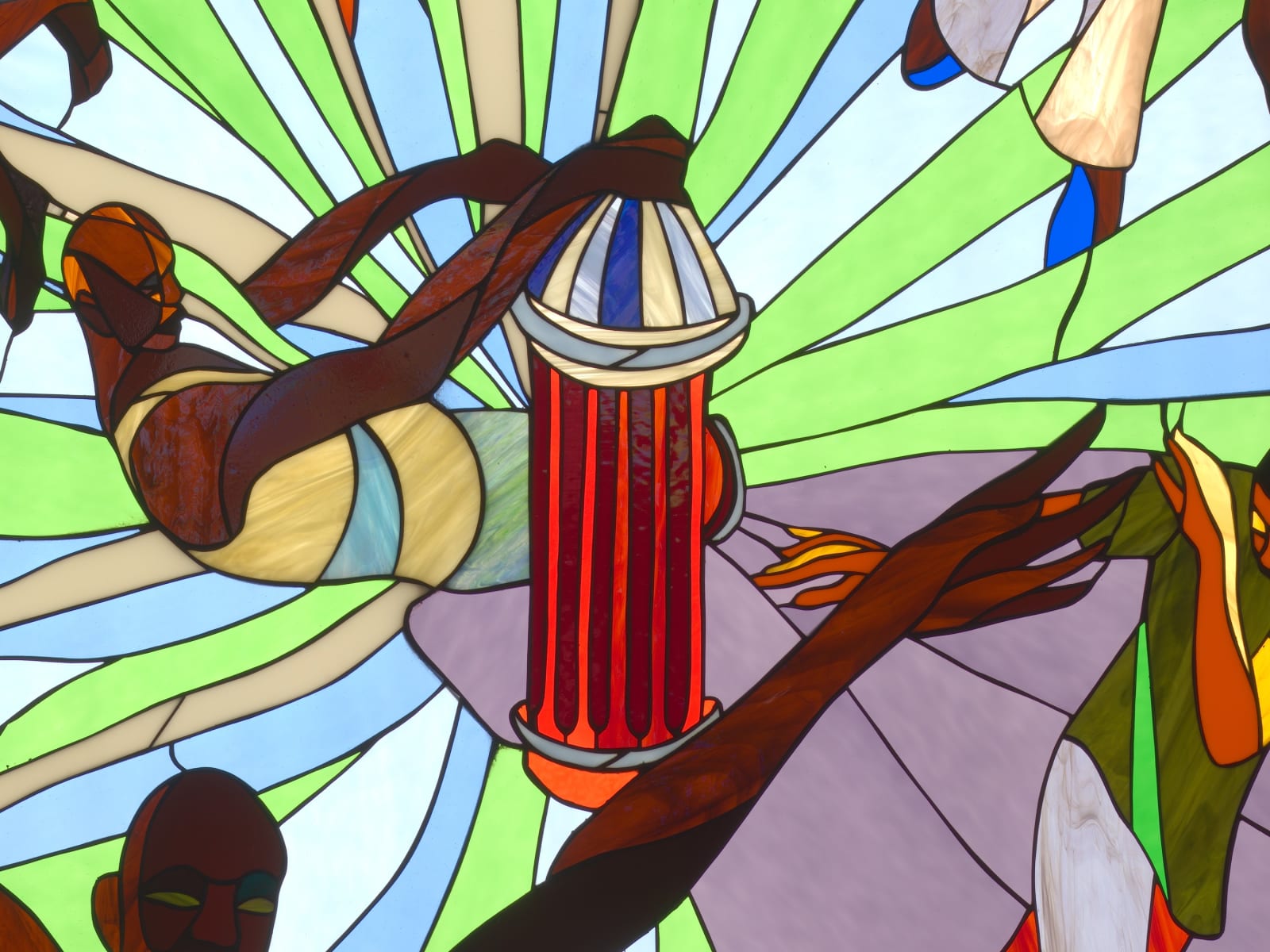-
Artworks



Uncapping, 2022
Stained glass lightbox61 3/8 x 61 3/8 x 5 in.
155.9 x 155.9 x 12.7 cmEdition of 1 + 1 APFurther images
Since the late 1800s, fire hydrants in New York City have been a welcome relief from rising temperatures in urban areas that did not have the luxury of pools and...Since the late 1800s, fire hydrants in New York City have been a welcome relief from rising temperatures in urban areas that did not have the luxury of pools and air-conditioning. The word that the city engineers use to describe the practice is “uncapping.” Of particular interest to Myers are two dynamics surrounding this seasonal phenomenon. The first is the joy and community spirit that he remembers from his own childhood, as older kids–who had often swiped a special pentagonal wrench to open the hydrant–let the water flow for the younger children in the neighborhood. This joy in the water came without all of the class-based intimations of wealthier children who traveled to the beach or to their families' summer houses. For Myers, it was integral that “joy in water” be part of this shrine. The second dynamic that Myers was interested in parsing is the extra-legal space of fire-hydrant play, which has always existed just to the left of ‘legality,’ but, like subway buskers, has become a phenomenon almost synonymous with joy and play in the cities.2of 2





